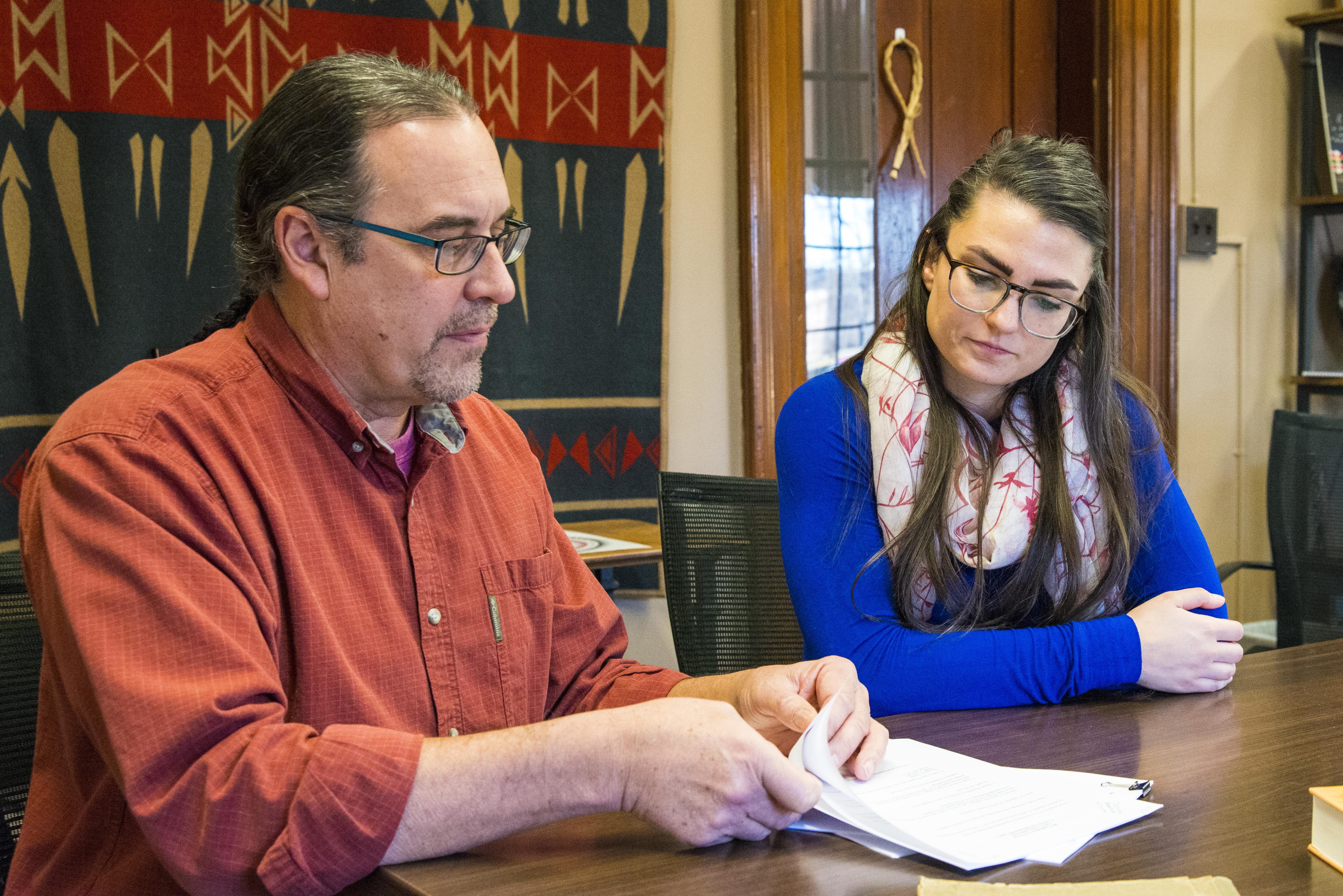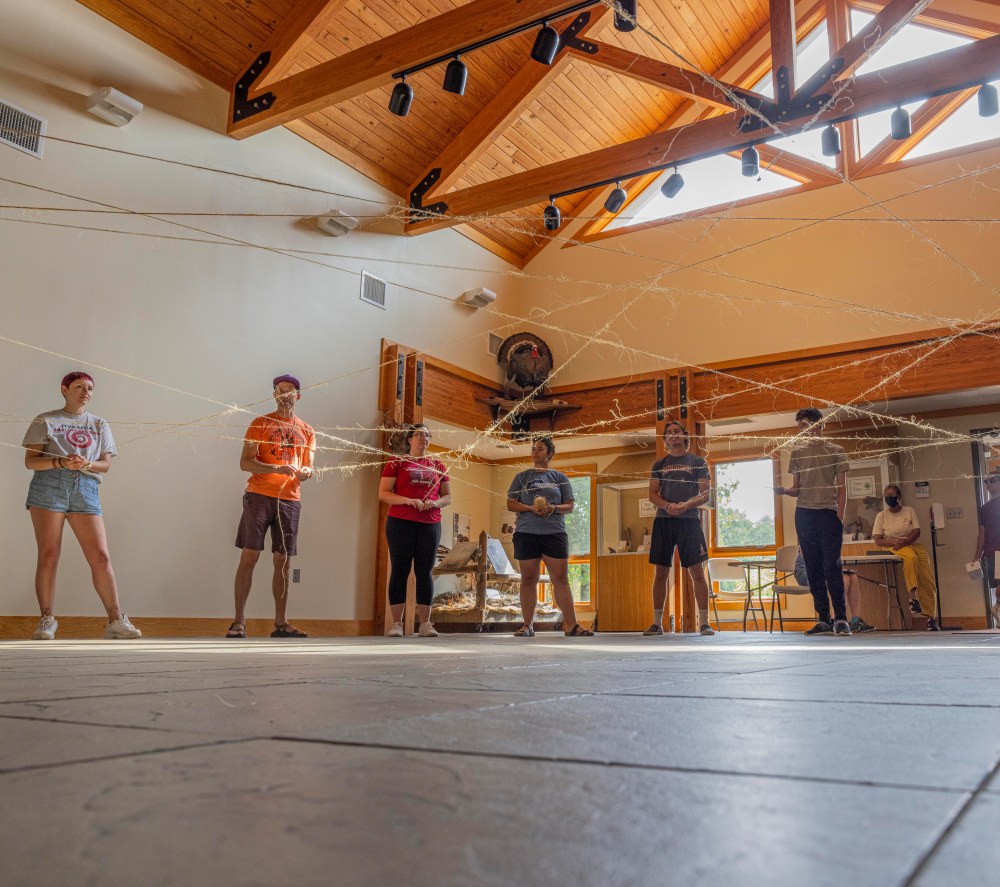The Myaamia Center’s Nipwaayoni Acquisition and Assessment Team (NAATeam) has spent the past year exploring the meaning of nahi-mihtohseeniwinki ‘living well’ through the lens of Myaamia language and culture and what it means for Myaamiaki to live well in the contemporary community today.

Haley Shea, a citizen of the Miami Tribe of Oklahoma and director of the Myaamia Center’s Office of Assessment and Evaluation, and Daryl Baldwin, executive director of the Myaamia Center, have led the team as co-principal investigators.
The Myaamia Center was awarded a three-year grant from the Robert Wood Johnson Foundation in 2022 to research and develop a model of Myaamia wellness.
“We believe health is culturally defined,” Shea said. “Having a Myaamia-specific understanding of health allows us to engage in behaviors and align our thought process with what feels right.”
Archival materials and connecting with individuals in the Miami Tribe have been imperative to this research. According to Shea, perceptions of health are impacted by historical and lived experiences. This is why the beliefs and actions that make one community healthy, wouldn’t necessarily have an impact on another.
“The rationale and value behind the things we’re doing always goes back to community,” Shea said. “And that’s really the big difference we’ve seen between Myaamia perspectives and other perspectives of health.”
In this first year of the grant cycle, the NAATeam has identified three primary attributes that define Myaamia wellness. These include Myaamia knowledge competencies, community values, and intentional interactions. The team hypothesized that a Myaamia person’s life can be positively impacted with knowledge and recognition of these attributes.
While the term ‘health’ is often understood as the absence of illness or disease, nahi-mihtohseeniwinki ‘living well’ expresses how many facets of health, like the body, mind, and spirit are all connected and integrate with the interactions and feelings of responsibility for the Myaamia community that can lead to reciprocal and individual benefits.

Photo by Jonathan Fox, Myaamia Center
“Most of the model itself comes from our experiences as Myaamia people,” Shea said. “Our relationships, our experiences, our own beliefs.”
The team also utilized archival materials to see what they could find about Myaamia perceptions of health and wellness historically. They were looking for things like quotes from past tribal leaders or written works that clarified their hypothesis.
While archives are useful in framing a historical perspective, the NAATeam knew they needed to talk to the Myaamia community to get a better idea of perceptions of wellness in the present day. So, the team held a series of three focus groups in Fall 2022.
“The responses gave us a much deeper understanding of how these concepts actually work today,” Shea said.
Paralleling this research, the NAATeam has also been developing tools that enable the tribal community to measure the health and wellness of the Miami Tribe at any given time.
“We can use this model to better understand the impact of our programs,” Shea said “We can use it to get a snapshot of community wellness both before and after an event.”
Shea hopes the ability to measure wellness will positively impact the Myaamia community. The Miami Tribe has always known anecdotally that community programs and the revitalization of language and culture have a positive influence on the well-being of the community, but this research allows community members to better understand the forces at work that influence our notions of well-being.

Photo by Karen Baldwin, Miami Tribe of Oklahoma
Measuring this impact could improve communication between program facilitators and those participating in or funding the programming, like Myaamia families, tribal leadership, and grant foundations.
Shea says the next step is to validate the NAATeams’s findings. This means surveying as many Myaamiaaki ‘Myaamia people’ as possible to see how these findings resonate with the community. The team has been hard at work to prepare this survey to be mailed out to each tribal household. They also plan on attending every in-person event hosted by the Miami Tribe, to get as much input as possible.
The NAATeam hopes this research will act as a springboard for more conversations about health and wellness within the Myaamia community. Community members can also use the model to self-assess and think about the ways they could improve their own well-being as a Myaamia person.
“This is a living document,” Shea said. “I hope as people begin to interact with [the model], they will talk more about their own experiences and the stories they’ve heard in their own families, and then we can refine this research even further.”
Check out next week’s Aacimotaatiiyankwi post to learn more about this research and the attributes of nahi-mihtohseeniwinki ‘living well’ from Haley Shea!
Updated 9/27/23